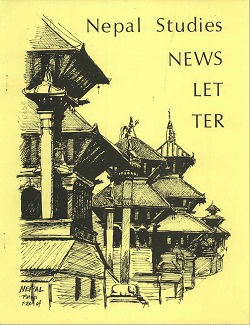Author Biography
Stéphane Gros is a social anthropologist, researcher at the Centre for Himalayan Studies, Centre National de la Recherche Scientifique (C.N.R.S., France). He has been conducting anthropological research in Northwest Yunnan province, China, since the mid-nineties, especially among the Drung (Dulong). He has published a monograph entitled La Part Manquante (Société d’ethnologie, 2012) and a number of articles on issues of interethnic relations and ethnic classification, representations of ethnic minorities, poverty and categorization. He is Principal Investigator for a European-Research-Council-funded project on the Sino-Tibetan Borderlands (Starting Grant No. 283870, 2012-2016), and has served as Managing Editor (2011-2014), and is now Editor-at-Large for the open-access anthropology journal Hau: Journal of Ethnographic Theory.
Abstract
Economic development and environmental protection have often proved to be conflicting driving forces behind change in northwest Yunnan province, China. In 2003, the Sloping Land Conversion Program brought an end to traditional shifting cultivation in the Dulong valley—part of the Gaoligong Mountain Nature Reserve, Gongshan County— and is now threatening Drung people’s livelihood and culture while further increasing villagers’ dependence on state subsidies. This paper addresses the implementation of this program and the difficulties encountered by locals in relation to environmental protection and economic development issues. It describes the specificities of swidden cultivation and explores aspects of human-environment relatedness in the Dulong Valley.
Acknowledgements
The author's fieldwork among the Drung in Yunnan was conducted at different times during the spring of 1998 and in the winters of 1999-2000, 2000-2001, and 2003, over a total of nearly eighteen months, with an additional field trip in autumn 2010. The author is indebted to the Drung people who hosted me and accepted to work with me. Prior versions of this article have been presented on several occasions and have benefited from constructive comments. The suggestions received from Georgina Drew and two anonymous reviewers have greatly helped improve the argument. The author would also like to thank Bernadette Sellers for her language editing. This article has been written within the framework of the European-Research-Council-funded project “Territories, Communities, and Exchanges in the Kham Sino-Tibetan Borderlands” (Starting Grant No. 283870).
Creative Commons License

This work is licensed under a Creative Commons Attribution-Noncommercial-No Derivative Works 3.0 License.
Recommended Citation
Gros, Stéphane. 2014. The Bittersweet Taste of Rice. Sloping Land Conversion and the Shifting Livelihoods of the Drung in Northwest Yunnan (China). HIMALAYA 34(2).
Available at:
https://digitalcommons.macalester.edu/himalaya/vol34/iss2/11


